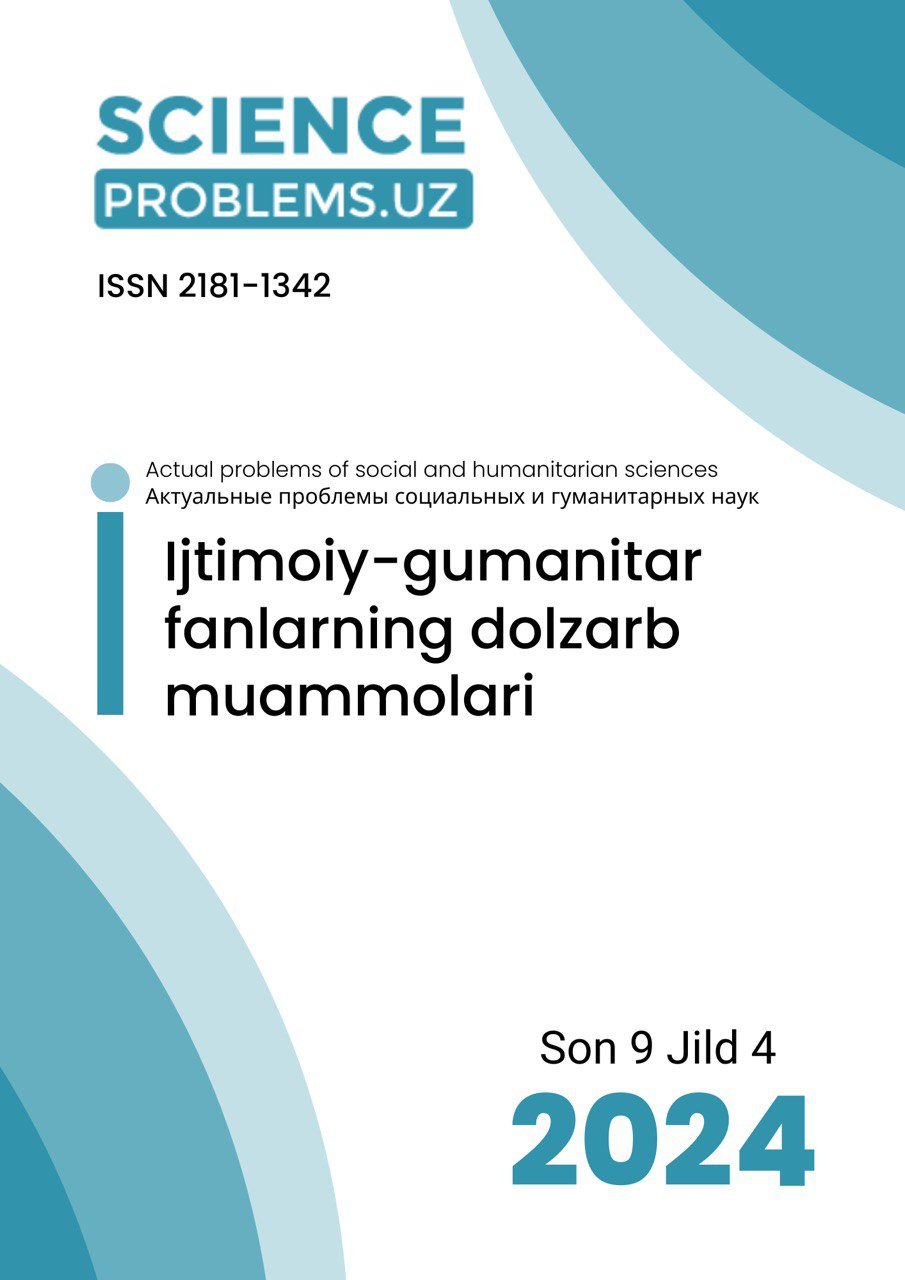BO’LAJAK O’QITUVCHILARNING TIZIMLI FIKRLASHINI RIVOJLANTIRISH MUHIM PEDAGOGIK MUAMMO SIFATIDA
DOI:
https://doi.org/10.47390/SPR1342V4I9Y2024N48Ключевые слова:
tizim, tizimli fikrlash, murakkab tizimlar, ierarxiya, ierarxik tizimli fikrlash modeliАннотация
Bugungi kunda ta’lim sifatini yaxshilash, o’quvchilarimizga dunyo standartlari darajasida ta’lim berish muhim vazifalardan biridir. Ayni jarayonda o’quvchilarning tizimli fikrlashlarini rivojlantirish muammosini o’rganish muhim ahamiyat kasb etadi. Maqolada bo’lajak o’qituvchilarning tizimli fikrlashini rivojlantirish borasida tadqiqotlar tahlili amalga oshirilgan, asosiy nazariy yondashuvlar umumlashtirilgan.
Библиографические ссылки
1. Ben-Zvi Assaraf, O., & Orion, N. (2005). Development of system thinking skills in the context of Earth System education. Journal of Research in Science Teaching, 42, 518–560.
2. Draper, F. (1993). A proposed sequence for developing system thinking in a grades 4–12 curriculum. System Dynamic Review, 9, 207–214.
3. English, L.D. (2006). Introducing young children to complex systems through modeling. In: P. Grootenboer, R. Zevenbergen, & M. Chinnappan (Eds.), Identities, cultures, and learning spaces (pp. 195–202). Adelaide: Mathematics Education Research Group of Australasia.
4. Forrester, J.W. (2007). System dynamics—A personal view of the first fifty years. System Dynamics Review, 23, 345–358.
5. Frank, M. (2000). Engineering systems thinking and systems thinking. Systems Engineering, 3, 63–168.
6. Goldstone, R.L., & Wilensky, U. (2008). Promoting transfer complex systems principles. Journal of the Learning Sciences, 17, 465–516.
7. Hmelo-Silver, C.E., Marathe, S., & Liu, L. (2007). Fish swim, rocks sit, and lungs breathe: Expert–novice understanding of complex systems. The journal of The Learning Science, 16, 307–331.
8. Jacobson, M.J., & Wilensky, U. (2006). Complex systems in education: Scientific and educational importance and implications for the learning sciences. The Journal of the Learning Sciences, 15(1), 11–34.
9. Lehrer, R., &Schauble, L. (2005). Developing modeling and argument in elementary grades. In: T.A. Romberg, T.P. Carpenter, & F. Dremock (Eds.), Understanding mathematics and science matters (pp 29–53). Mahwah, NJ: Lawrence Erlbaum Associates.
10. Lesh, R. (2006). Modeling students modeling abilities: The teaching and learning of complex systems in education. The Journal of the Learning Sciences, 15, 45–52.
11. Liu, L., & Hmelo-Silver, C.E. (2009). Promoting complex systems learning through the use of conceptual representations in hypermedia. Journal of Research in Science Teaching, 46, 1023–1040.
12. Orion, N., & Basis, T. (2008). Characterization of High School Students’ System Thinking Skills in the Context of Earth Systems. Presented in the 2008 NARST Annual Meeting. March, 2008. Baltimore, U.S.A
13. Resnick, L.B. (1987). Education and learning to think. Washington, DC: National Academy Press.
14. Shaked H., Schechter C. Systems thinking leadership: New explorations for school improvement. Management in Education, 2020, vol. 34 (3). DOI: https://doi.org/10.1177/0892020620907327
15. Sheehy, N.P.,Wylie, J.W., Mcguinness, C.,&Orchard, G. (2000).Howchildren solve environmental problems: Using computer simulations to investigate system thinking. Environmental Education Research, 6, 109–126.
16. Vasconcelos P. N., Zambroni de Souza A. C. A problem-based introduction to technical, social, and systemic thinking in engineering courses. IEEE Access, 2022, vol. 10, pp. 73521–73532. DOI: https://doi.org/10.1109/ACCESS.2022.3189654
17. Zohar, A.,&Dori,Y.J. (2003). Higher order thinking skills and lowachieving students: Are they mutually exclusive? Journal of the Learning Sciences, 12, 145–182.








